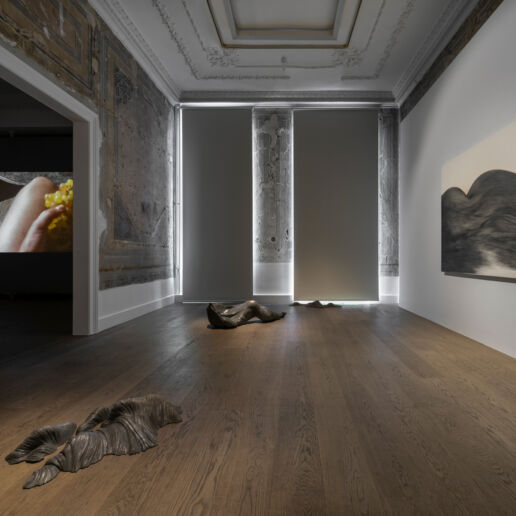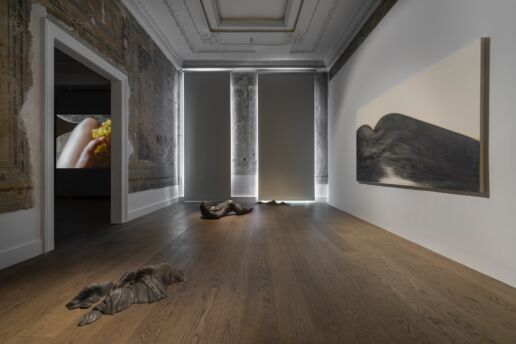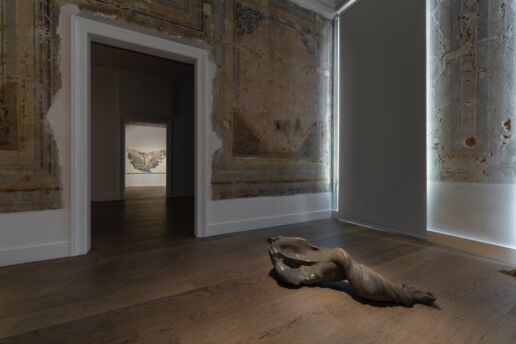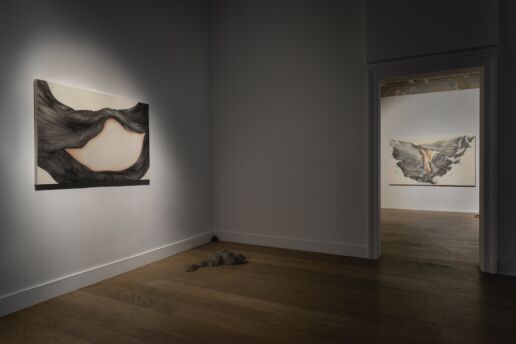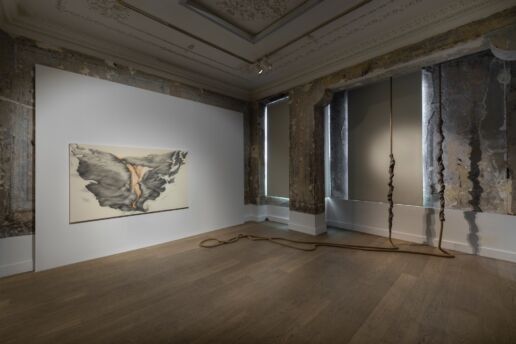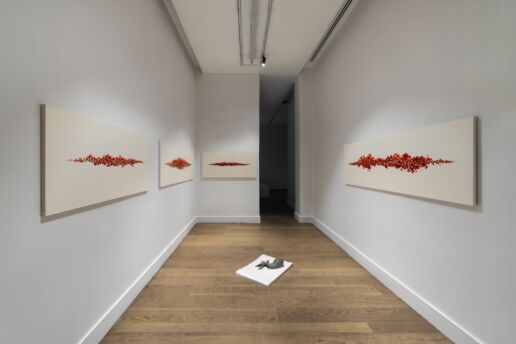CORNERS UNTURNED, KNOTS UNTIED
Broken Horizon is Ayça Telgeren’s fifth personal exhibition at Galerist - an exhibition that embraces you and starts guiding you even before you get your bearings; one that captivates your soul as it does the space, one that is calming yet equally thrilling.
I’m a denizen of Istanbul who was very late in discovering Ayça. Sometimes, your paths don’t cross with an artist at the right time, but when they do, the questions in your mind change when you find yourself looking at their work on canvas… This is precisely what happened when I saw Ayça’s Kaf (Qaf) at the A Momentary Absence exhibition last year. I was profoundly impressed with the women holding hands to make a legendary mountain rise and the cracks in the landscape riddled with ridges and valleys.
Almost a year after that encounter, I visited Galerist’s new exhibition, excited to finally meet and talk with Ayça. She led me to walk around the exhibition in my own time without intervening, just the way she freely creates her work relying on intuition. Afterwards, we sat down to talk over a cup of coffee.
The exhibition starts at the entrance of the Passage Petits-Champs building and travels through the gallery. Sometimes going below ground level and sometimes occupying corners, the artist designed the layout so that the audience could wander like a passenger around the body of the building. Broken Horizon starts on the ground floor, and from the stairs that no longer provide access to Istiklal Avenue, omitting the building’s function as a passage, it spreads to the first floor and into every corner. The sculptures at the main door of the gallery on the first floor make me contemplate my femininity and fragility. As in most of the artist’s works, hair is a key instrument in this exhibition. ‘I think and work on incommunicable femininity. I am doing my own archaeological research into the stories of my long and thick-haired ancestors told by the women of my Circassian family. Their stories are braided like their hair, full of the knots they find themselves in, and how they cut out of them,’ says Ayça. On this journey, she defines as tracing the footsteps of her female ancestors; Ayça’s companions are Suat Derviş, Eda Yiğit, Ursula K. Le Guin, and, of course, Virginia Woolf. Leading Finnish architect and architectural theorist Juhani Pallasmaa’s ‘The Eyes of the Skin’ and the book’s central concept of hapticity (sensory integration of bodily perceptions) helped Ayça shape her horizons for this exhibition.
The exhibition title might suggest a reference to the future, but Ayça’s belief that ‘Every artist conceives the future by pondering on the past and present’ reminds us to take a closer look at where we are. I cannot agree more with her definition of the horizon: ‘It is the closest thing among the things farthest from us!’ Reflecting on the preparation period for the exhibition, she told me how she discovered she was an obstinate optimist despite everything going on in this country. She believes that we must remain focused on hope. Comparing the etiquette and social norms of her childhood and youth to life today, she feels a little deceived and thus more vulnerable. ‘We were taught that success and respect only came to those who worked hard and honestly. The world order is very different nowadays.’
During our time together, we discovered that although our stories and lives as women differ, the knots and milestones bear resemblance. ‘Sometimes, I will see the work I do in my dreams. I then explore the feelings inside me as if trying to figure out the ingredients in a meal just by smelling it.’ I doubt you can get more sincere. Before we say goodbye, we discuss the last room of the exhibition and Cemal Süreyya’s poem ‘Üstü Kalsın (Keep the Change)’ and realize that we are already on a journey we have never taken physically or mentally, turning corners we have never turned on the way, just like the audience of Broken Horizon…
Ayça Telgeren’s fifth solo exhibition, Broken Horizon, will be displayed at Galerist from March 7 to April 27, 2024.


